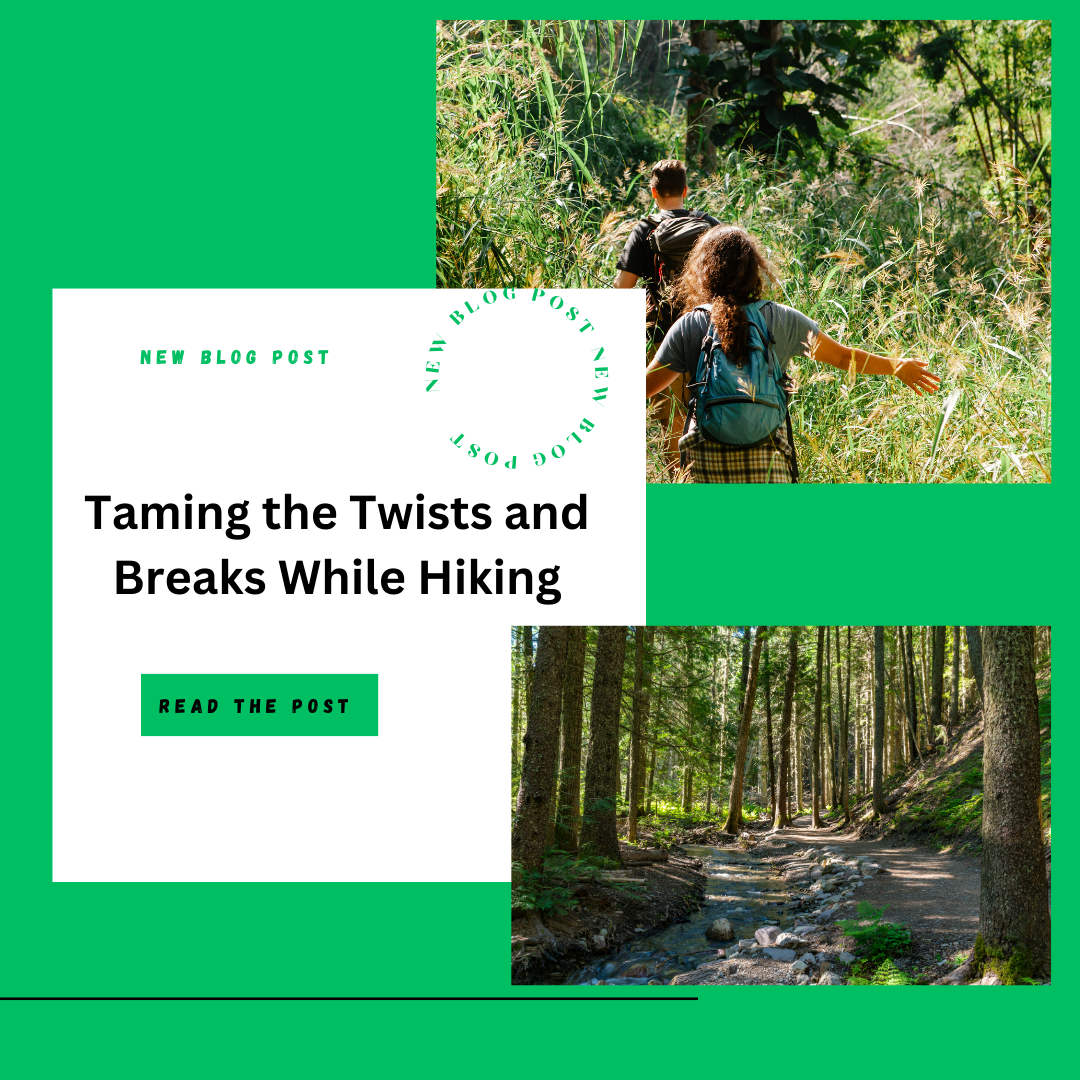FREE FREIGHT AUSTRALIA WIDE FOR ORDERS OVER $200

Taming the Twists and Breaks: First Aid for Sprains and Fractures While Hiking

Picture yourself traversing an awe-inspiring trail, basking in the serene wilderness, breathing in the crisp mountain air, and soaking in the splendid vistas that unfurl with every step you take. Yet, in its captivating beauty, nature occasionally tosses in a curveball. A misplaced step, an untimely stumble, and suddenly you're confronted with the stark reality of a sprained ankle or, worse, a fracture.
At First Aid Distributions, we recognise that the cornerstone of any safe hiking adventure is a state of preparedness. An adventurer equipped with knowledge and the right gear is one who can not only respond effectively to unexpected incidents but also continue their exploration with an undiminished spirit.
Join us as we delve into the world of managing sprains and fractures on the trail. With the right knowledge at your fingertips, you can navigate these hurdles with confidence and assurance. Embrace your outdoor adventures, armed with the wisdom to turn potential calamities into mere hiccups on your journey.
An Unexpected Turn: A Hiker's Tale of Resilience
Meet Max, a passionate hiker whose tales serve as valuable lessons for all outdoor enthusiasts. On one golden autumn afternoon, as the leaves painted a colourful canvas around him, Max was navigating a rocky mountain trail. Misfortune struck when an ill-placed step led to a fall, causing a harsh twist in his ankle. The sharp sting of pain was instantaneous, and Max knew there was no walking this one off. Miles separated him from the nearest ranger station, but Max was far from helpless. He was armed with the most powerful tool: preparedness.
Nestled in his backpack, Max had his trusty companion: a hiking-specific first aid kit from First Aid Distributions. Swiftly, he put the kit to use. His hands moved with surety as he wrapped his injured ankle with a bandage, immobilised it using a splint, and applied a cold pack to mitigate the swelling. While the sprain may have curtailed his hiking plans prematurely, his readiness and understanding of first aid enabled him to manage the situation effectively and avert a more severe injury.

Max's story stands as a potent illustration of the critical importance of being ready for unexpected injuries. Now, let's delve into the intricacies of handling sprains and fractures during your hiking journeys. Armed with this knowledge, you can ensure that even an unwelcome stumble won't stop you in your tracks.
Mastering the Art of First Aid: Handling Sprains and Fractures
Sprains
Sprains are injuries to ligaments, the tough bands connecting bones in a joint. Here's how to manage a sprain:
- Rest: Avoid moving the injured area to prevent further injury.
- Ice: Apply a cold pack from your First Aid Distributions kit to the sprain to reduce pain and swelling.
- Compression: Use a bandage to wrap the area snugly, but not too tight.
-
Elevation: If possible, elevate the sprained area to help reduce swelling.

Fractures
Fractures involve a break in a bone and can be more serious. Here's what to do:
- Immobilise: Keep the fractured area as still as possible to prevent further damage. Use a splint or padding from your first aid kit.
- Pain Management: Apply a cold pack to reduce pain and swelling.
- Get Help: Seek professional medical help immediately. Do not try to realign the bone.
Remember, the above steps are for managing the injury in the field. Always seek professional medical advice following an injury.
Going the Distance: Staying Safe on the Trail
Max's story reminds us of the potential for injury in our outdoor adventures. However, with the right knowledge and a robust first aid kit, we can manage these situations effectively and safely.
At First Aid Distributions, we are committed to your outdoor safety, providing comprehensive first aid kits equipped for various situations, including managing sprains and fractures. With every kit, we aim to provide you with the tools and confidence to handle whatever the trail might throw at you.
As you plan your next hiking adventure, remember that the right preparation can turn a potential disaster into a mere hiccup. Keep trekking, keep exploring, and let us take care of your safety. After all, the wilderness is meant to be embraced, not feared. Stay safe out there, hikers!
Next week, we will explore how to deal with heat stroke. Stay tuned, and happy hiking!

